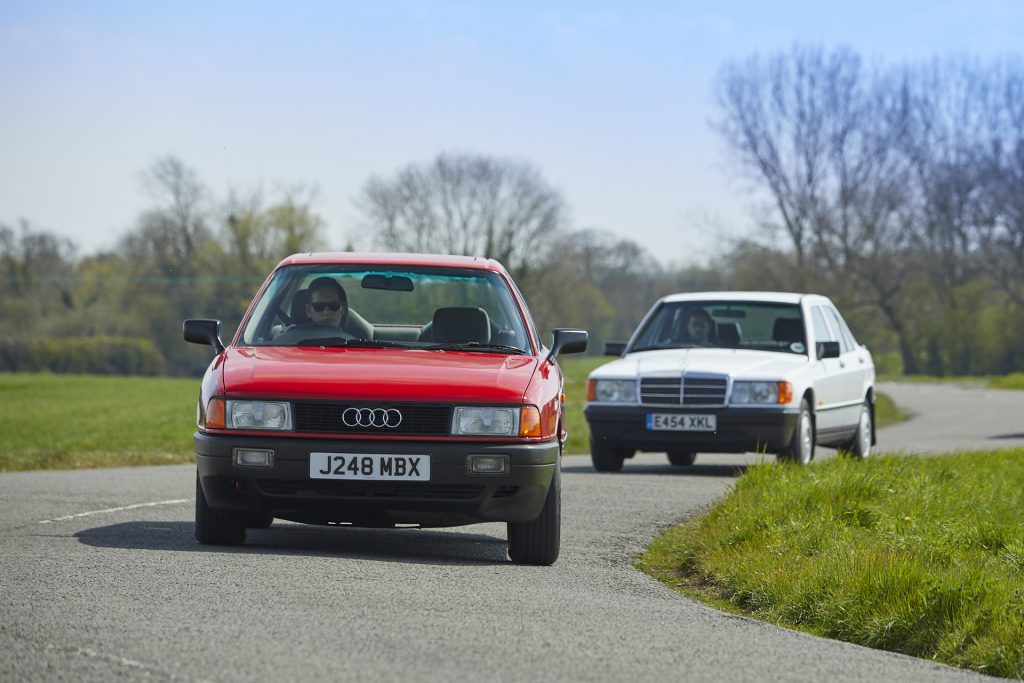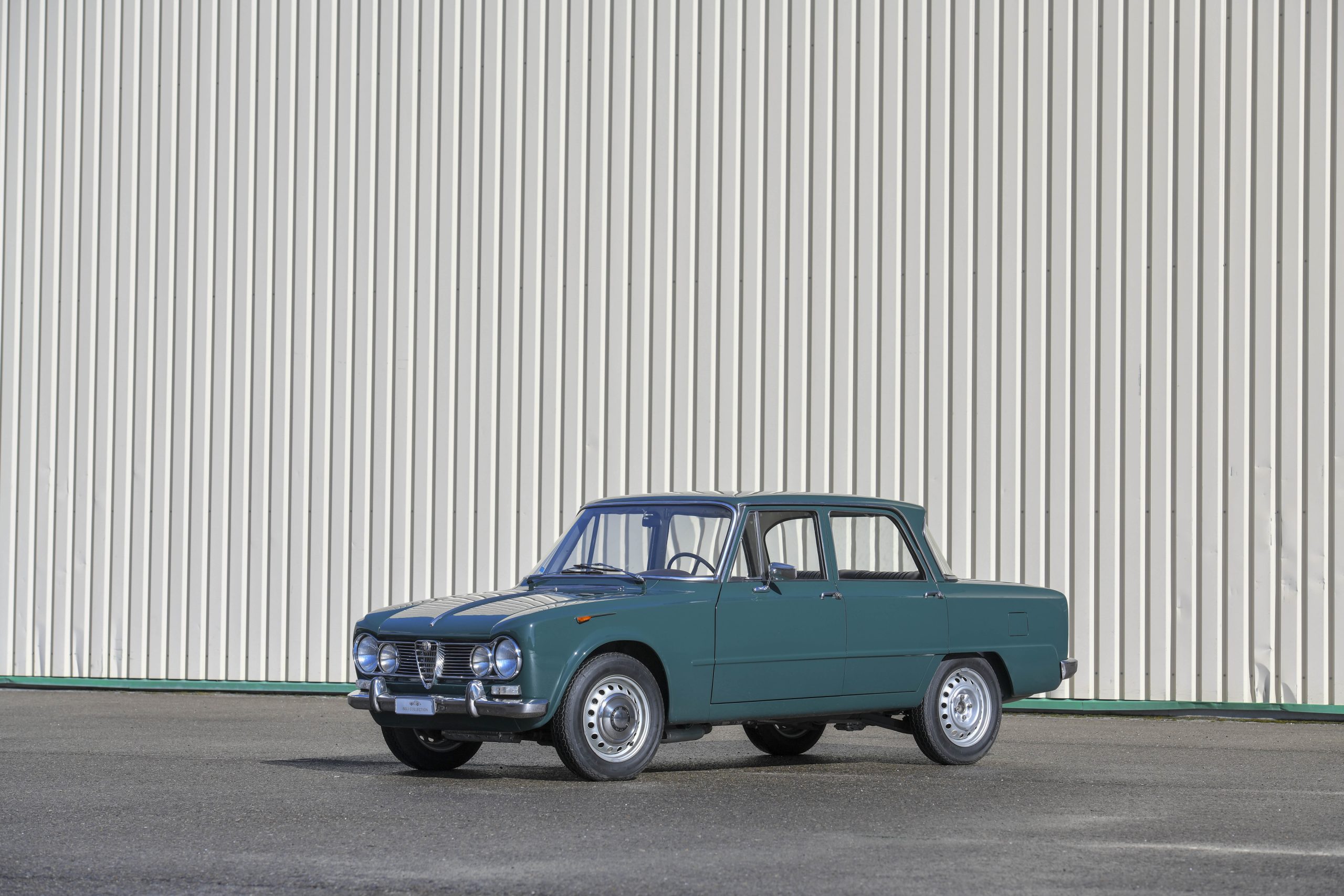We’ve been here before: A new petition on the UK government website is calling for the rolling road tax exemption age for classic cars to be reduced from 40 years to 30 years.
The petition asks that the exemption be reconsidered in order to help younger drivers with an interest in classic cars more easily afford older vehicles. Shifting the exemption from 40 years to 30 years would, as it stands, reduce annual costs for the entire 1980s period of older vehicles, with popular models from the 90s becoming exempt in the coming years.

With just shy of 700 signatures at the time of writing, the petition has a long way to go before reaching the 10,000 signatures required to attract a response from the government or the 100,000 it would need to be raised in parliament, and we’ve seen similar petitions come and go with no response in the past.
It does though once again raise the interesting question of what constitutes a classic or historic vehicle in legal terms, outside of the more subjective definitions used by everyone from the motoring press to classic club stands at car shows.
At 40 years for Vehicle Excise Duty (VED) exemption, the UK government’s definition is consistent with its own MOT exemption age (itself unpopular in many quarters for putting the onus for vehicle safety squarely in the owner’s hands), but behind the curve in relation to many legal and subjective boundaries found elsewhere.
How old is a classic?

The Federation of British Historic Vehicle Clubs, the group behind Drive It Day held each year, recognises a classic as any vehicle over 30 years old, as does its global counterpart FIVA, the Fédération International des Véhicules Anciens.
In the United States, that cutoff point is typically 25 years – vehicles over 25 years are eligible for import to the United States and no longer subject to Federal vehicle safety standards that apply to new vehicles. Individual states such as California also use 25 years as the age at which vehicles of “historic interest” are eligible for Historic Vehicle license plates.
Incidentally, Hagerty also uses 25 years as the cutoff for eligibility into the Concours de l’Ordinaire at the Festival of the Unexceptional, with cars up to 1996 taking pride of place on the lawn for this year’s show. If you’re questioning whether a car from the mid to late 90s can be considered a classic, then remember that in 1996, the Alfasud, Alpine A310 and Mazda RX-3 were all 25-year old cars, and all those were regulars in the pages of classic car magazines just as MGFs and Pumas are today.
Until 1997, the UK had a rolling VED exemption for vehicles over 25 years old. That was then frozen at January 1, 1973 until 2014, when the current 40-year rolling tax exemption was introduced. There’s precedent for a later date then, but even moving to 30 years rather than 25 would help make cars from an increasingly popular period in automotive history just that little more affordable to run.
What’s your view of when old cars should become exempt from VED? Share your opinion in the comments section, below.
Also read
Our classics: 1996 Subaru Impreza Turbo
The chips are down: Why the semiconductor shortage is hobbling the car industry
Catalytic converter theft surge continues










Classic status is not just age. It is how well the car was built, style, innovation in design and whether it stood out with contemporary vehicles. That is how the Veteran/vintage/PVT classes have been established. Modern cars last longer than pre war or 50/60s cars so whether an old car is a classic or just a banger takes longer to determine. So, for now, stick with 40 years.
I strongly disagree with the comments made about how to determine between a classic vehicle or an old banger. I believe that the vast majority of older vehicles on the road are better maintained than their younger counterparts due to the fact that you can physically see the cause of any fault which might occur, rather than having to plug a more modern vehicle into a machine for a diagnosis! Owners of classic vehicles have more empathy,interest and consideration for their vehicles, which in my humble opinion makes for safer motoring!
We must try to keep these classic vehicles on the road for the growing amount of younger people who have an interest in our motoring history,be it motor cars or motorcycles.
The consequences of allowing safety to be the responsibility of the owner could be a big mistake. First the vehicles are more capable of higher speeds and secondly the owners are likely to be of a generation that has never maintained their cars. The result of accidents would reflect very badly on the present Veteran/vintage/PVT class.
In my opinion 40 years is about right. Many cars of 25 to 30 years are often bought and driven by younger less experienced drivers. That in itself is not a problem but the 40+ cars are far more likely to be driven by true enthusiasts. I drive a Singer Gazelle from 1965 and it is wonderful to drive a car with no electronic gismos for a change. Don’t get me wrong as I would not swap my daily driver 2008 Ford Mondeo Titanium X Estate for anything.
When they are gone they gone. It will be shameful if we ignore this fact and let so many fantastic cars from the 80’s and 90’s just fade away. It is not the prestige models that are at threat; it is the everyday models that many of us grew up with. These cars are part of history and culture. Let’s not just sit back and regret…
Most classic car owners do their utmost to keep their cars in pristine condition which is costly and hard to source parts .and bring joy to so many people with nostalgic memory s they need to be preserved. For historic purposes
I agree with the comments that vehicles are harder to maintain and cost a lot of money ; it’s not just the owners who get satisfaction; it’s fantastic to see them still rolling.
I have a 32-year-old motor home, and I have spent thousands of pounds and endless time on .
I personally think that there should not be tax charges for vehicles over 30 years old or charges in green zones, or at least charges should be minimal
I have a 34 year old 7.5ton Ford cargo horse truck which is used every day and it still sounds like it did when it was new,
I also agree that all vehicles are classic when they get to 30 years old and the charges for clean air zones, tax and m. o. t should be cheaper or scrapped for these vehicles.
It’s now 2022 and I feel I’m being cheated. I have a 1987 BMW motorcycle that was just approaching zero tax when they moved the limit to 40 years. Am I going to see a jump to 50 yr old in the next few years to pay for covid lockdown.??
What annoys me is my roadtax is now at £101 a year but I have 2 cars of which I pay £30 and Zero on. Where is the fairness in that..?? We fo approx 4000 milss a year each in the cars but only about 1000 to 1200 on the bike.
I wouldn’t mind if I paid just 30 but 101 is just criminal for a 35 yr old bike….
The 30 year cutoff should be reinstated. My Marcos has a value of over £30,000 and I now get a whopping £12.50 plus the congestion charge to take it out of the garage.
Given the numbers of 30 to 40 year old cars on the road and the infrequency they get driven the level of polution from them would be insignificant, especially when you consider that VOCs from perfume are higher than the emmisions from cars.
Also most modern vehicles will not last 30 years, and are almost impossible to get parts for after 15 years. My 15 year old Huyundai is at the point of being impossible to reppair.
i own a 1999 mercedes convertable which i have had over 20yrs i do 800 miles per year in summer months but pay high road tax, can they not have a system where you only pay road tax when used ie daily,
I, like many other owners of Classic Minis made by Rover in the 1990s, am still lumped with the VED (now £200 p/a!) and yearly MOT expenses despite many of our later vehicles being fitted with Catalytic Converters and other efficiency measures which make our cars far more green than Minis from previous decades. Albeit a fair bit less kind to the environment than the modern DPF/EGR’d German diesel I fall back to when the Mini is garaged.
Most classic car owners I know only drive a handful of miles per year, personally fewer than 1,000 miles during the spring/summer months. Yet compare our usage to those with heavier hybrid and fully electric vehicles who are causing far more wear on the highways doing 10-20k+ miles per year, yet pay little or zero VED for the upkeep of the roads they regularly use. It’s hardly fair.
Please, UK Government, give our lovely 90s cars an exemption so we may continue to invest in maintaining what’s left of British motor heritage. That £200 would go quite far in the yearly upkeep.